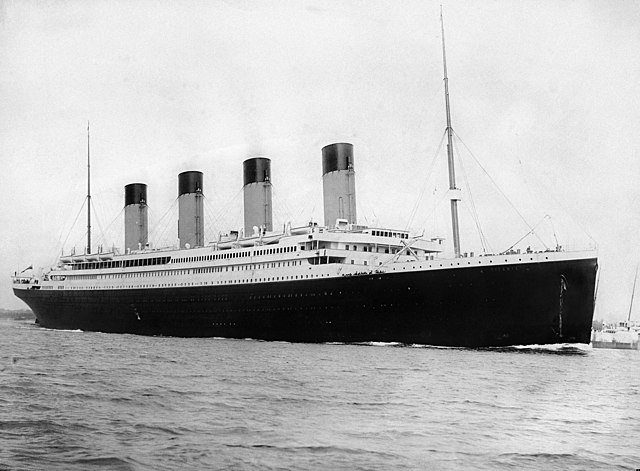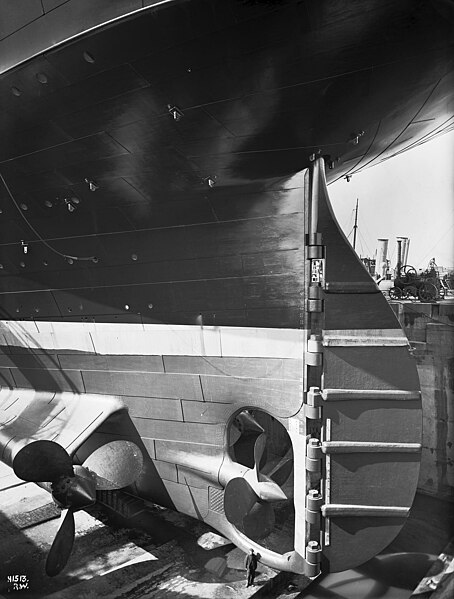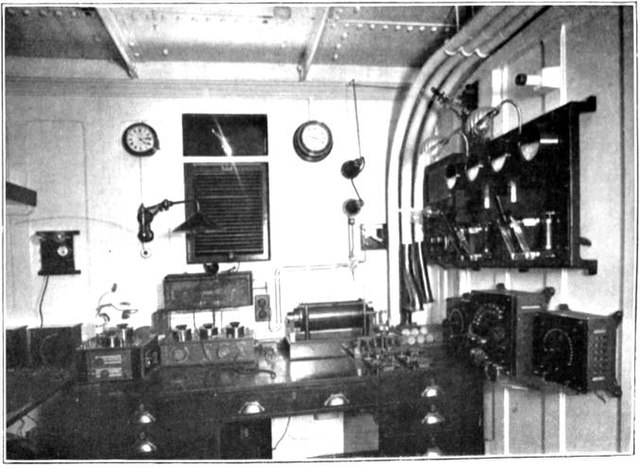RMS Titanic was a British ocean liner that sank on 15 April 1912 after striking an iceberg on the ship's maiden voyage from Southampton, England to New York City, United States. Of the estimated 2,224 passengers and crew aboard, approximately 1,500 died, making the incident the deadliest sinking of a single ship at the time. Titanic, operated by the White Star Line, carried some of the wealthiest people in the world, as well as hundreds of emigrants from the British Isles, Scandinavia, and elsewhere in Europe who were seeking a new life in the United States and Canada. The disaster drew public attention, spurred major changes in maritime safety regulations, and inspired a lasting legacy in popular culture.
Titanic departing Southampton on 10 April 1912
RMS Olympic's rudder with central and port wing propellers; the man at the bottom shows scale.
Marconi Company receiving equipment for a 5-kilowatt ocean liner station in the wireless radio room of Titanic's sister ship, Olympic
The only known picture of Titanic's wireless radio room, taken by the Catholic priest Francis Browne. Harold Bride is seated at the desk.
An ocean liner is a type of passenger ship primarily used for transportation across seas or oceans. Ocean liners may also carry cargo or mail, and may sometimes be used for other purposes. Only one ocean liner remains in service today.
As of 2024[update], RMS Queen Mary 2 is the only ocean liner still in service
RMS Lusitania arriving in New York in 1907. As the primary means of trans-oceanic voyages for over a century, ocean liners were essential to the transportation needs of national governments, business firms, and the general public.
In 1838, Sirius was the first ship to cross the Atlantic using continuous steam power.
The first voyage of SS Great Western (1838)





![As of 2024[update], RMS Queen Mary 2 is the only ocean liner still in service](https://upload.wikimedia.org/wikipedia/commons/thumb/b/b3/Queen_Mary_2_Boston_July_2015_01_%28cropped%29.jpg/640px-Queen_Mary_2_Boston_July_2015_01_%28cropped%29.jpg)


